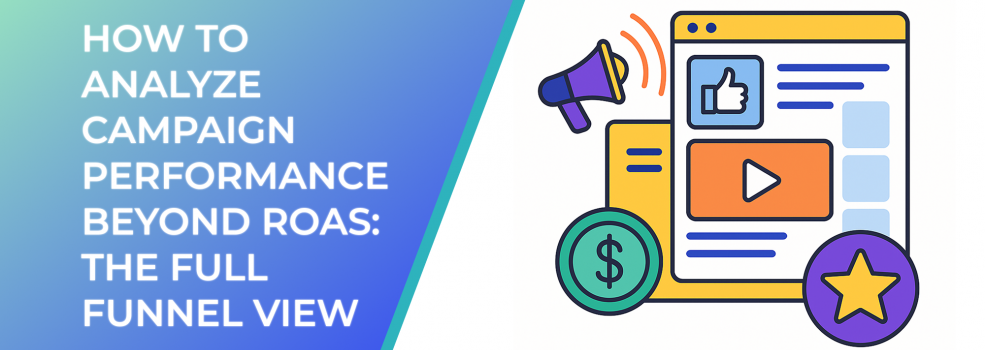Why ROAS Isn’t Enough
ROAS (Return on Ad Spend) has long been the go-to metric for advertisers, but it only tells a partial story. While it's useful for measuring direct returns, it doesn’t reflect the broader customer journey, especially for B2B or high-consideration purchases where conversions happen over time.
In fact, a study by Nielsen found that only 45% of marketing impact is captured by short-term ROAS metrics. This means over half of your campaign's influence could be missed if you're not looking at the full funnel.
Breaking Down the Full Funnel
Visual overview of key metrics at each stage of the marketing funnel—from awareness to conversion
A full-funnel approach considers the entire customer journey, from first impression to final conversion. Here's a quick breakdown:
-
Top of Funnel (TOFU): Awareness and reach. Metrics include impressions, reach, CPM, and engagement.
-
Middle of Funnel (MOFU): Consideration and intent. Metrics include CTR, time on site, bounce rate, and lead generation.
-
Bottom of Funnel (BOFU): Conversions and sales. Metrics include CPA, ROAS, conversion rate, and LTV.
Instead of isolating ROAS, analyze how each stage contributes to nurturing and converting your audience.
Key Metrics to Watch Beyond ROAS
-
Cost Per Click (CPC): Indicates ad efficiency and audience targeting quality.
-
Click-Through Rate (CTR): Signals ad relevance and creative strength.
-
Conversion Rate: Tells how well your landing page and offer perform.
-
Customer Lifetime Value (LTV): Helps assess long-term ROI.
-
Cost Per Lead (CPL): Especially important in B2B and longer sales cycles.
For deeper analysis, segment these metrics by audience, ad placement, and creative type. You can also refer to our guide on How to improve campaign performance with Meta Advantage+ to learn optimization tactics across these KPIs.
Attribution Models Matter
Default attribution settings can skew your performance analysis. A last-click model, for instance, gives full credit to the final interaction before conversion, ignoring earlier engagements that built intent.
Consider switching to a data-driven or linear attribution model to gain better insights into how each touchpoint contributes to conversions. This is particularly important when running multi-channel campaigns that include Facebook, Instagram, and other paid media.
Tools and Techniques for Full Funnel Measurement
-
UTM Parameters: Use these to track campaign performance across different channels and devices.
-
Facebook Analytics Tools: Take advantage of Facebook Ads Manager's breakdowns by demographics, placement, and time.
-
CRM Integration: Syncing with your CRM gives visibility into post-click behavior and long-term conversion outcomes.
Optimizing Each Stage of the Funnel
-
TOFU: Focus on creative testing, audience expansion, and cost-efficient reach.
-
MOFU: Use retargeting ads and lead magnets to nurture interest. A/B test landing pages and optimize for mobile.
-
BOFU: Improve your offer clarity, reduce checkout friction, and use lookalike audiences to scale.
You can explore more targeting strategies in Get Your Facebook Group Noticed: Attract Members Who Actually Engage.
Final Thoughts
Evaluating campaign performance through a full-funnel view helps you allocate budget smarter and grow sustainably. While ROAS is still important, it shouldn’t be the only measure of success. By diving deeper into every stage of the funnel, you unlock opportunities to scale your marketing efforts with precision.
For more on optimizing ad performance from top to bottom, read our post on Secrets Behind High-Performing Facebook Ads Campaigns.

